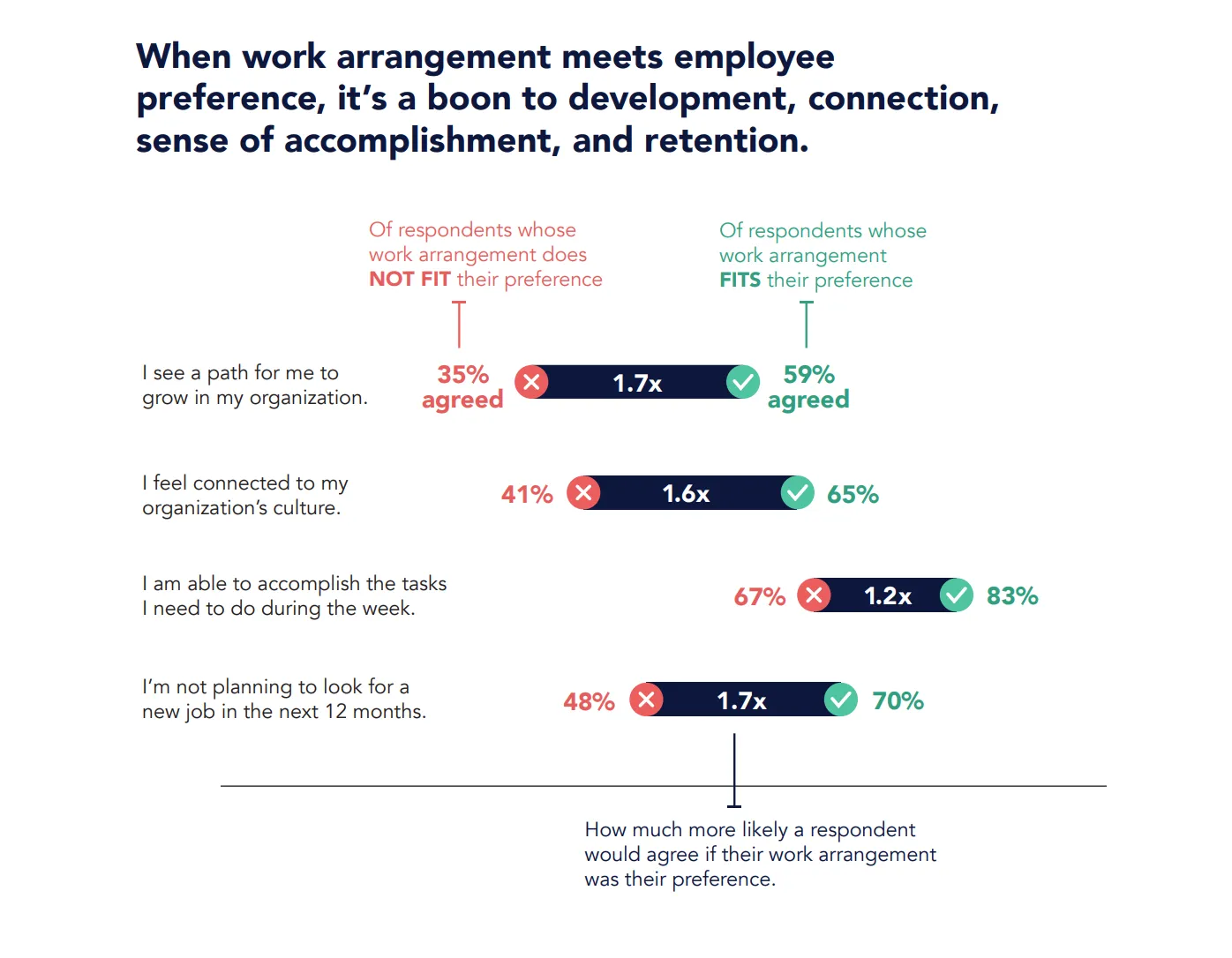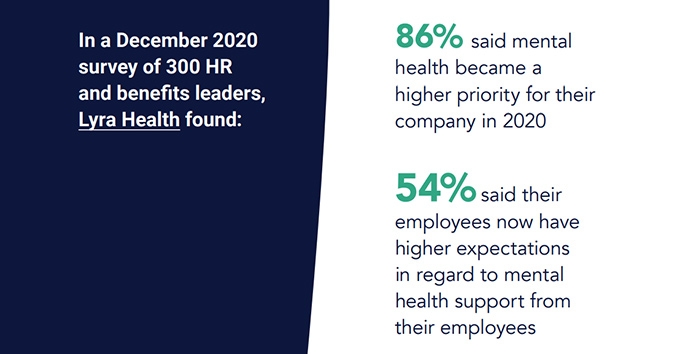Top Remote Work Trends: Impact, Effectiveness, and Future Outlook of Working from Home
Table of contents
- Effectiveness of remote work
- Evolution of remote work
- The current state of remote work
- Impact of employees working remotely on companies
- Impact of remote work on job seekers
- Remote work statistics: productivity and performance
- Remote work lifestyle: work-life balance and mental health
- Remote work and the environment
- Potential consequences of calling workers back
- The future of remote work
- Conclusion

Remote work started as a temporary solution amidst lockdowns before developing into a dominant feature of modern work. It required companies and HR departments to let go of previous work patterns and move on to more flexible arrangements. While not without bumps in the road, modern technology smoothed as many out as possible.
However, technology still has not yet advanced to mimic the experience of being around people. It can strengthen relationships and connect more people. The debate many organizations are having is how to make in-person work meaningful.
Here are the dominant remote work trends and how they could shape the next year and beyond.
Effectiveness of remote work
The effectiveness of remote work has been the subject of constant debate since the onset of the pandemic. Survey research by Harvard Business ReviewOpens in a new tab illustrates a divide between leaders and employees, with the former concerned that remote work harms productivity, while the latter believes it helps.
Data from Gallup aims to resolve the issue once and for all by showing that remote work improves business outcomes, leading to 21% higher profitability. On top of that, job flexibility is also proven to engage employees, making them enthusiastic, energetic, and positive at work.
But that’s not all—the same study reveals that flexible work is a benefit that the most talented employees desire, making it a crucial driver of your company’s recruitment and retention efforts. Working from home is also eco-friendly, reducing your carbon footprint and energy use.
Evolution of remote work
Although remote work seems to be a modern concept that arose during the pandemic, its roots go back to 1973, when Jack Nilles, a NASA engineer, coined the term “telecommuting.” This was made possible by early innovations like the typewriter, telephone, and public electricity.
In 1979, a few years after the introduction of personal computers, companies like IBM started testing the effectiveness of working from home. A company experiment that began with a team of five remote employees grew to 2,000 workers by 1983.
Technological advancements in the 1990s, such as the invention of WiFi and the internet, formed the foundations of remote work. Video conferencing also fueled the remote work revolution by enabling employees in different locations to have virtual meetings in real time.
During the pandemic, modern video conferencing platforms such as Zoom, Skype, and Microsoft Teams saw a huge boost as lockdowns urged people to work from home. Since then, these remote collaboration tools have been widely used to facilitate remote work.
The current state of remote work
McKinsey's research highlights the growing trend towards remote work, showing that it’s not just a temporary pandemic response but a new aspect of the modern working world. In the US workforce, 92 million workers have been offered flexible work, while 80 million are engaged in it.
Among all industries, remote work is most prevalent in the tech, finance, business, and professional service sectors. It’s also more common in major cities than in small cities and towns, a 2023 Stanford survey revealed.
Some companies continue to resist working from home and want to limit remote work arrangements for employees. Common challenges cited include onboarding new hires, managing fluctuating working hours, and the absence of a clear hybrid work schedule policy to support productive and balanced hybrid work plans.
Impact of employees working remotely on companies
Remote and flexible schedules aren’t just for employees. They also benefit your organization in the form of 35% more productivity, 40% fewer quality defects, 41% lower absenteeism, 12% decrease in turnover, and 21% higher profitability, according to Forbes.
Additionally, remote work enables you to attract and retain top talent by expanding geographic reach, demonstrating a commitment to employee well-being, and valuing work-life balance. It also makes your workplace more welcoming to a diverse and highly skilled workforce.
Littler's survey data shows that 70% of US employers use the hybrid work model, which combines in-office and remote work to provide employees with autonomy, flexibility, and a healthy balance between different work environments.
To thrive in this type of work arrangement, both employers and employees need to learn essential skills, such as time management, technical proficiency, and remote communication, including virtual meeting etiquette for remote attendees and hybrid teams.
Impact of remote work on job seekers
Remote work provides employment opportunities to various job seekers, including people with caregiving responsibilities, disabilities, and mental health conditions. This work arrangement also benefits introverts, digital nomads, workers who prefer flexible schedules, and employees who don’t feel a sense of psychological safety at work.
Cost savings are another benefit of remote work, as your employees may spend less on commuting, childcare, and car maintenance, among others. These savings can add up to $5,000 to $10,000 a year, says Forbes.
However, remote work poses several challenges, such as communication issues and companies struggling to manage a dispersed workforce. Limited in-person interactions can also cause feelings of isolation among your employees and increase the risk of cultural breakdown.
Luckily some strategies enhance employees’ sense of culture and belonging. This can include learning how to engage remote meeting participants and nurturing workplace relationships.
Remote work statistics: productivity and performance
Data plays a massive role in organizational decision-making, and now, three years later, the sample size is large enough to adequately determine if and how remote work enables your organization to build a high-performing and productive workforce that’s ready for the future.
Employee performance and remote work
For many organizations, productivity is a key factor in deciding whether to allow employees to work from home. A Microsoft report revealed “productivity paranoia” in 85% of leaders who find it challenging to have confidence in employee productivity during the shift to hybrid work.
So, does working remotely actually help or hinder employees from performing their best work?
A two-year study by Great Place To Work involving over 800,000 employees from Fortune 500 companies showed that people’s productivity levels increased by up to 13% while working from home. Research by Global Workplace Analytics produced a similar conclusion.
Conversations® is a useful tool for building engagement and boosting productivity in remote teams. It allows you to deliver frequent and effective check-ins while establishing meaningful connections among team members and managers.
Remote work lifestyle: work-life balance and mental health
Working remotely can positively impact your employees’ well-being and mental health, especially in terms of work-life balance when working from home. However, alongside its benefits, remote work also has several challenges and downsides to consider.
Work-life balance for remote workers
In a Cisco survey involving 28,000 full-time workers worldwide, 78% of respondents claimed that remote and hybrid work improved their work-life balance. Additionally, 63% of U.S. job seekers stated that they would choose better work-life balance over better pay in their careers.
Much of the work-life balance benefits employees enjoy from remote work come from the time saved on commutes and the added schedule flexibility.

Employees are likely to spend extra time connecting with family, friends, and pets. Others choose to devote more time to self-care, pursuing healthier eating habits, and running important errands like attending a doctor’s appointment.
However, with remote work comes the challenge of disconnecting from daily meetings and tasks, as well as coping with feelings of burnout. Employees often feel compelled to reply to emails after working hours for fear of disappointing their boss or colleagues.
Mental health and remote work
Remote work is associated with plenty of psychological benefits, especially for people with anxiety, neurodivergent individuals, and those who are uncomfortable working in traditional in-office settings.

Unfortunately, working from home also entails mental health challenges, such as increased loneliness, difficulty maintaining focus, and rising stress levels. According to SHRM, fully remote workers experience a 40% increased likelihood of anxiety and depression symptoms. For organizations, investing in mental health benefits can help counteract that stress.
Remote work and the environment
The ability to work remotely offers significant benefits to employers and employees alike, but let’s not forget about the positive effects that it can have on the environment as well. Here are a few insights on how working from home can be a sustainable solution for your organization:
Reduction of carbon emissions
Remote work allows companies and employees to save time, money, and energy that would have been spent in coming to the office. This results in a corresponding decrease in carbon emissions, as less fossil fuels are used in generating heat, electricity, and transportation.
By digitizing documents for remote work, your organization can also drastically reduce company-wide paper usage. Since office spaces use more energy through heating and cooling systems, lighting facilities, and computer equipment, encouraging employees to work from home also reduces overall energy consumption and is better for the environment.
Sustainable remote work practices
By taking their work home, your employees contribute to less traffic congestion and lower levels of nitrogen dioxide in the air. Nitrogen dioxide is one of the major air pollutants from vehicle emissions. It largely contributes to acid rain and is harmful to humans’ respiratory health.
Working from home also results in lower waste production in employees. Simple habits like cooking at home, brewing your coffee, and drinking water from the tap minimize the need for food packaging, plastic coffee cups, and single-use water bottles.
Potential consequences of calling workers back
After the pandemic, several companies were eager to welcome employees back into the office, citing reasons such as the need to foster more collaboration, develop a stronger company culture, and stimulate mentorship and career development, according to SHRM.
However, Gallup research shows that there’s an “executive-employee disconnect” in this area, as 34% of remote-capable employees prefer to permanently work from home, 60% desire a long-term hybrid work arrangement, and only 6% want to work fully on-site.
The study further reveals that when an employee’s preferred location doesn’t match their current location, the consequences for the company include lower employee engagement, increased burnout, and a high turnover risk.
In fact, six out of 10 exclusively remote employees are highly likely to change companies if they’re not offered remote flexibility. By comparison, three out of 10 hybrid employees are highly likely to change companies if they’re not offered remote flexibility.
The future of remote work
Regardless of your organization’s size and industry, workplace innovation is required in the future of work. According to Harvard, companies rely on innovation to solve new problems, foster growth, and separate their business from competitors.
Providing your employees with the option to work remotely is one way of embracing workplace innovation. Although flexible work comes with unique challenges of managing remote employees, it offers significant benefits in employee productivity, retention, engagement, and, ultimately, profitability.
Learn how the Workhuman Platform can transform employee engagement in your organization.
Conclusion
The sudden shift to remote work caused a massive reevaluation of the traditional office environment and forced organizations to develop new and better ways of working.
While some organizations experience positive changes from flexible work in the form of enhanced productivity, business continuity, and profitability, managing remote employees remains a challenge for others.
As the workplace of the future continues to evolve, knowing the latest remote work trends can give your organization a glimpse of what’s to come and allow you to prepare for many more workplace transformations up ahead.
About the author
Ryan Stoltz
Ryan is a search marketing manager and content strategist at Workhuman where he writes on the next evolution of the workplace. Outside of the workplace, he's a diehard 49ers fan, comedy junkie, and has trouble avoiding sweets on a nightly basis.